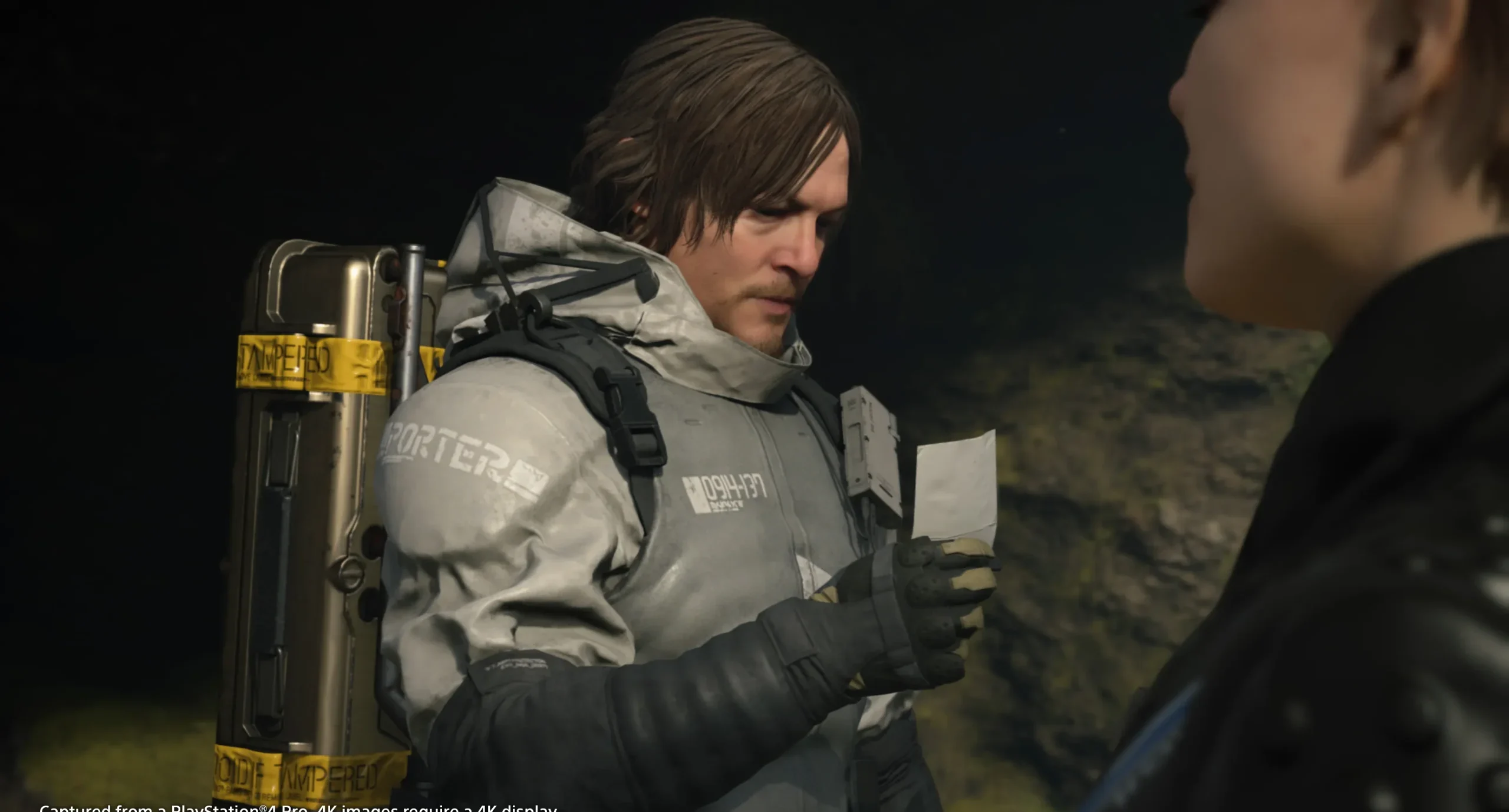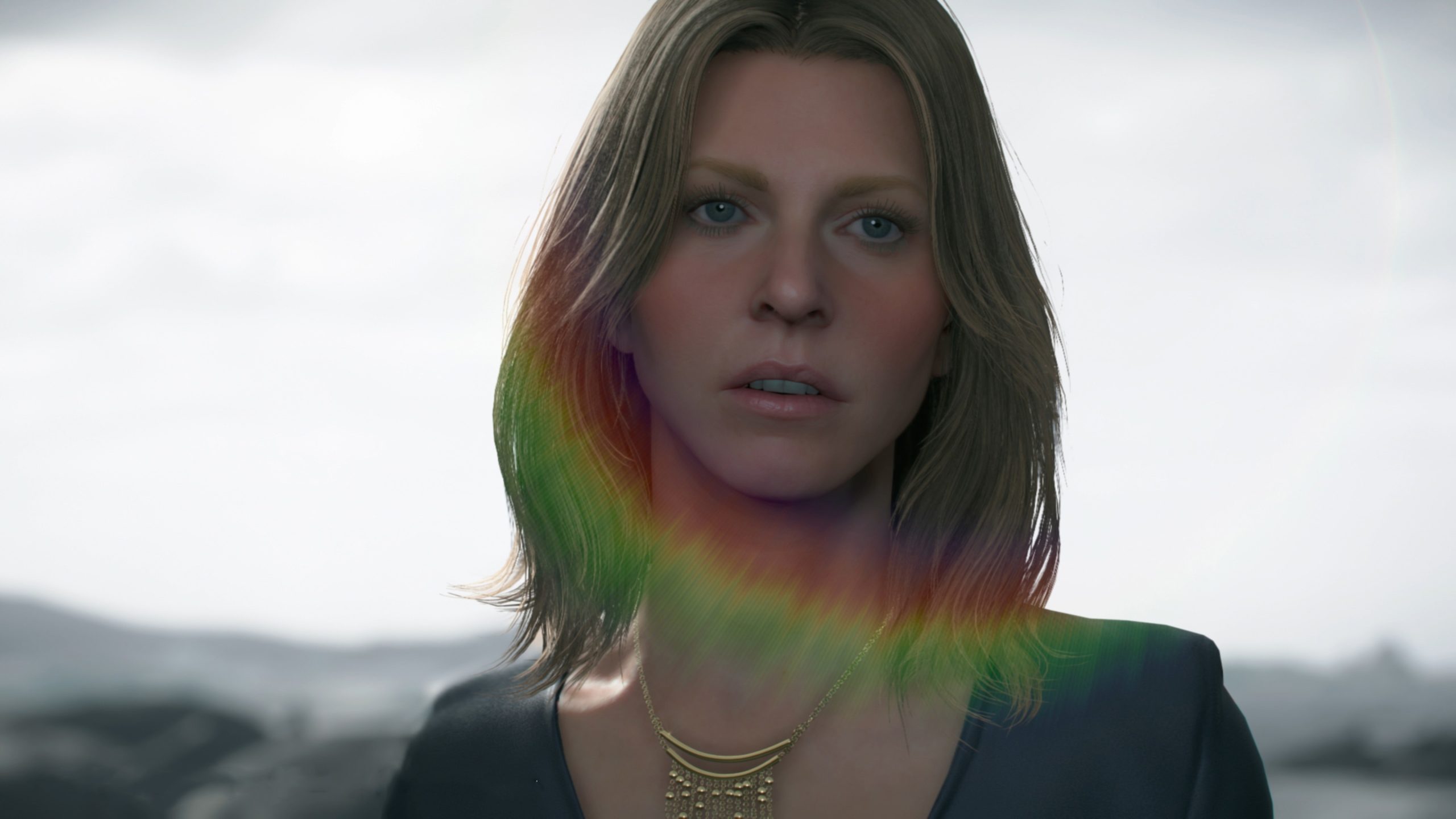Near the final part of the game, Amelie reveals the real situation behind their identity and what Sam’s journey to reconnect America has actually meant. Amelie is not a regular human being. She exists only as a ‘Ka’ – which the game uses to describe a soul.
Although everyone, including Sam, assumes Amelie is the daughter of President Bridget, the reason for their resemblance is because Amelie and Bridget are actually two parts of one being. Bridget Strand, who passed away at the beginning of the game, represented the physical body or ‘Ha’.

Amelie existed as the soul separated from that body. When Bridget was much younger and battling cancer, her soul broke away from her body. From then on, that soul kept existing independently, and Bridget created a false background for Amelie, calling her a daughter when in truth she was just another part of herself.
The truth is that Amelie – being Bridget’s soul – is actually an Extinction Entity of Death Stranding. As explained during the game’s final stretch, an Extinction Entity exists to initiate massive extinction events that shape the future of humankind.
By convincing Sam to link different regions of America through the Chiral Network, Amelie causes most people to become connected to her personal Beach. That connection gives her the power she needs to trigger a worldwide catastrophe called the ‘Last Stranding’.
The term ‘Death Stranding’ relates to how the world was already affected when the story starts – with the dead turning into BTs because their souls are trying to return to their bodies.
As the character Heartman suggests, the Death Stranding may be connected to earlier extinction events that have shaped Earth’s past, and that this process has taken place five times already. The ‘Last Stranding’ would then be the sixth and final one.
As events reach their peak, Amelie gives Sam a choice between ‘pulling the rope or cutting the noose’, meaning he must either embrace or destroy her. While the game allows the player to aim a gun at her, the only way forward is to choose not to fire – instead, to show mercy by hugging Amelie.
During this emotional moment, Amelie expresses that what she has truly craved all her life is human connection. Watching Sam’s journey and the pain he endured to bring people together gave her a new understanding of why humanity is worth saving.
Although she hints that earlier extinction events were the result of similar decisions, she eventually chooses to remain on her Beach and delay the Last Stranding. The idea is that the extinction will still happen one day, but not just yet.
So humanity gets another chance – the disaster doesn’t happen immediately. But that’s only one part of what the ending reveals.
The Truth Behind Cliff & Sam
Throughout the game, there are emotional flashbacks and battle scenes involving Cliff, a soldier played by Mads Mikkelsen. He often appears talking to a Bridge Baby, and later confronts Sam in various war-themed segments linked to his own Beach.
Cliff’s background remains unclear for much of the story. However, by the conclusion, it is revealed that Cliff is actually Sam’s real father. Those flashbacks of Cliff with a Bridge Baby are seen from Sam’s perspective because they are his own early memories.
What happened is this: Sam, the child of Cliff, was one of the original Bridge Babies. Both father and son were killed by Bridget and Die Hardman due to a conflict about who should have custody of the baby. After the death of the baby version of Sam, his soul found itself on the Beach.
That was where Amelie – the soul half of Bridget – brought him back to life out of regret for what her physical self had done. This act, however, disturbed the normal cycle of life and death and caused the first steps of the Death Stranding to begin.
It also granted Sam the power to revive every time he dies, which becomes one of his key traits.
Sam Makes A Connection
As things begin to settle after Amelie’s decision to hold off the extinction, Sam receives one last instruction from the BRIDGES organisation. His Bridge Baby, Lou, is beginning to decay inside the pod, a process called necrosis. They ask Sam to take Lou to the incinerator so that the baby’s death doesn’t result in a voidout.

During a slow, emotional walk to the incinerator, Sam experiences one final flashback that focuses again on Cliff, as described above. But when the moment to let go comes, Sam makes a choice – he secretly swaps Lou with his handcuffs, refusing to go through with the incineration.
At the beginning of the game, Sam avoids close relationships. He has Aphenphosmphobia, a condition that makes physical touch uncomfortable for him. He also carries a deep emotional burden that keeps him distant from people.
But in this final act, Sam decides to accept love and human closeness again. His swap of the pod with the cuffs (which also represent how BRIDGES tracks him and how little freedom he has had) shows that he is breaking free from those bonds.
Sam then recalls something Deadman mentioned earlier: that the baby might still survive if taken out of the pod. So, making one last effort to save Lou – the child both he and the player have come to care about – Sam removes them from the only environment they have known.
At first, it looks like Lou has died. But after a few moments of tension, the baby opens their eyes. Sam holds the child close and walks away, ready to start a new chapter of life.



